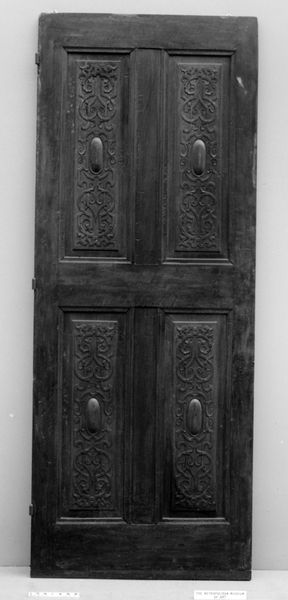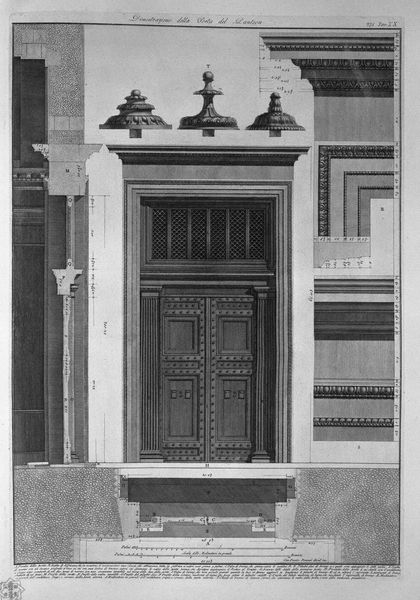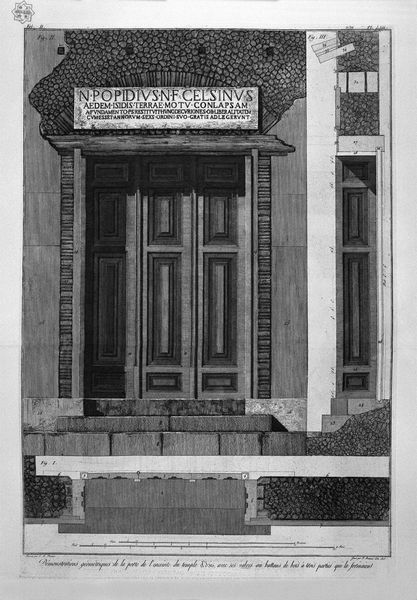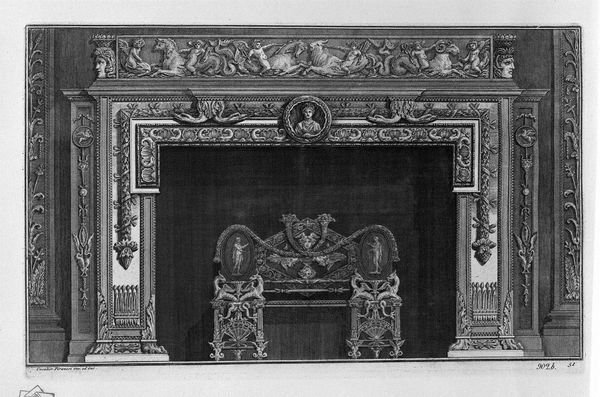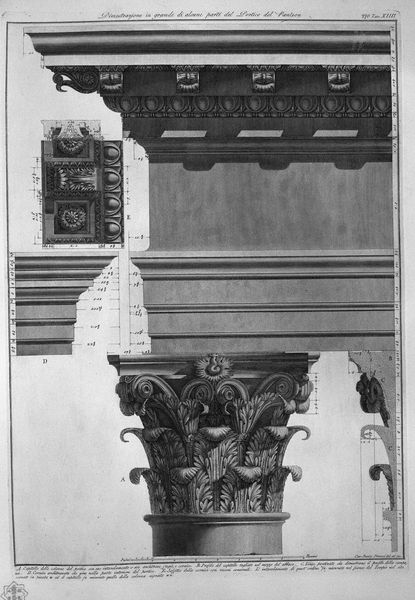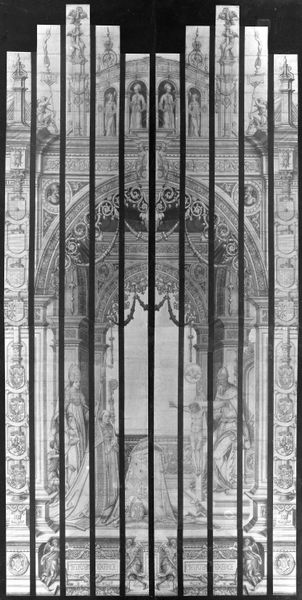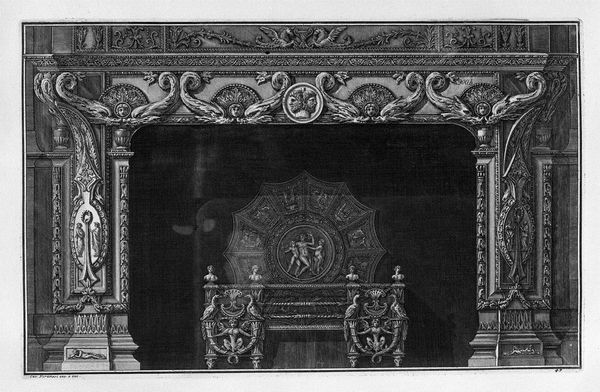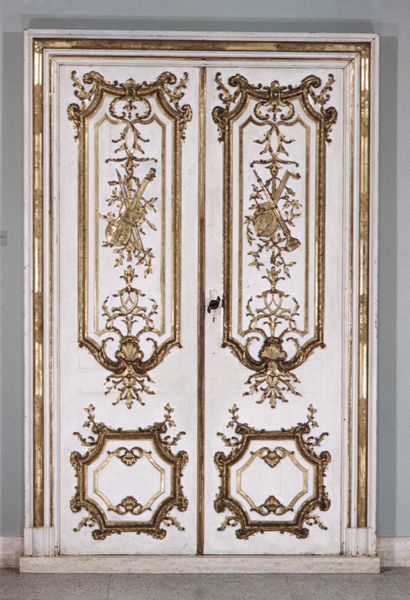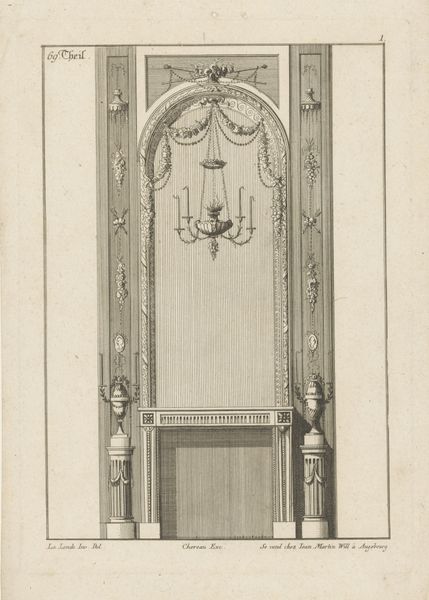
Doorcase for the Great Drawing Room of Norfolk House, Saint James's Square, London 1750 - 1760
0:00
0:00
carving, relief, sculpture, wood, architecture
#
portrait
#
carving
#
baroque
#
sculpture
#
relief
#
historic architecture
#
traditional architecture
#
sculpture
#
wood
#
architectural
#
decorative-art
#
architecture
Dimensions: 12 ft. 5 in. × 58 1/2 in. × 10 in. (378.5 × 148.6 × 25.4 cm) Ideal Door Opening should be:: 92 3/4 × 44 1/2 in. (235.6 × 113 cm)
Copyright: Public Domain
Curator: Just look at this! It's almost theatrically imposing, isn't it? Editor: Indeed. This photograph captures the doorcase from the Great Drawing Room of Norfolk House, originally located in Saint James's Square, London. Created sometime between 1750 and 1760, attributed to Giovanni Battista Borra, and now residing here at The Metropolitan Museum of Art, this elaborate woodwork instantly communicates the wealth and status of the home’s original inhabitants. Curator: The level of detail is astonishing. The eye is immediately drawn upward to the figures draped in garlands, supporting that incredible urn. Do they represent anything specific? Editor: Likely allusions to classical antiquity, intended to broadcast the owner’s cultivation and knowledge. It speaks to the powerful sway that neoclassicism held over the British aristocracy, influencing how they wished to be perceived—and what they chose to display. This door wasn't merely functional; it was a statement. Curator: And a meticulously crafted one. Note the interplay between the robust, almost baroque energy of the crowning sculptures and the more restrained, elegant carving along the doorframe itself. It’s as if it encapsulates two distinct stylistic moments. There’s tension and yet cohesion, somehow. Editor: I'd agree. The entire ensemble would have been a carefully curated message within the larger narrative of the house itself. Each room, each doorway like this, contributing to an overall effect of established grandeur, accessible only to a select circle. What meanings were being performed and for whom is really fascinating. Curator: Certainly. Symbols accumulate meaning and resonate through centuries. Even divorced from its original location, this doorframe radiates ambition, speaks volumes about the society that valued this kind of display, and provokes speculation about what lay behind it, both literally and figuratively. Editor: Precisely, the Norfolk House door case showcases how art functions beyond aesthetics, embedding social and cultural meaning for future viewers to interpret. Its craftsmanship reveals the dialogue of class, power, and aspiration intrinsic to 18th century society.
Comments
No comments
Be the first to comment and join the conversation on the ultimate creative platform.
